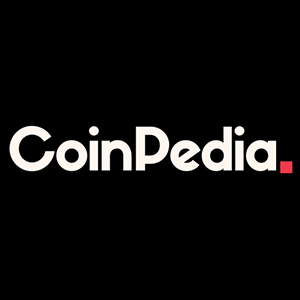3 Roadblocks To Crypto Adoption
5 min read
Summary Since the launch of spot ether ETFs this summer, there have been launches reviving the crypto equity universe. There has also been a continued push toward building a spot crypto ETF hierarchy. While some analysts and investors love cryptocurrencies in an ETF wrapper, there’s just not broad mainstream demand beyond bitcoin. That doesn’t mean there won’t be demand in the future. There are important issues to address before demand becomes more widespread. Crypto ETF innovation hasn’t stopped. Since the launch of spot ether ETFs this summer, there have been launches reviving the crypto equity universe (e.g., SPDR Galaxy Digital Assets ETFs). There has also been a continued push toward building a spot crypto ETF hierarchy. Issuers like VanEck and 21Shares have filed for spot Solana ETFs. More recently, and Bitwise has filed for a spot XRP ETF. Neither Solana nor XRP have a clear path ahead in the near term (more on that later). But the big question is, do mainstream investors want more crypto, or does interest end with spot bitcoin ETFs? While some analysts and investors love cryptocurrencies in an ETF wrapper (including myself), there’s just not broad mainstream demand beyond bitcoin. That doesn’t mean there won’t be demand in the future. But right now, there are more important issues to address before demand becomes more widespread. First, let’s look at some of the roadblocks for broader crypto adoption (beyond bitcoin). 1. Are clients ACTUALLY interested in crypto? The spot bitcoin ETF launch was almost too good to be true. There was a lot of uncertainty, there was drama (fake SEC tweet), there was an unprecedented race among issuers. All of this resulted in a record-breaking launch. Many of us thought this launch would help bring crypto into the mainstream and encourage adoption. But by the spot ether ETF launch in July, we were deep in the summer doldrums. Demand for these products was significantly muted compared to their spot bitcoin counterparts. Of course, this was expected to an extent – bitcoin has significantly more market cap than ether. But ether is the silver to bitcoin’s gold. And if the “silver” of the crypto world has not caught on in the ETF universe, it’s difficult to predict what demand we’ll see for other cryptocurrencies (i.e., Solana, XRP). The issue is that we’re confusing crypto investors with mainstream retail investors. The two groups have some crossover but aren’t necessarily the same. On one hand, seasoned crypto investors and analysts see the benefit of investing in multiple cryptocurrencies – not just bitcoin. But they usually like direct investment. The ETF wrapper, while a game changer, is a trade-off for those direct investment characteristics – security, privacy, decentralization – that cryptocurrencies are known for. And unlike the old-school crypto investor, newer investors may be satisfied with a simpler approach to cryptocurrency investing (e.g., investing in just bitcoin ETFs). Bitcoin and ether have two very different use cases. Yet, it is very easy to use bitcoin as a “just for fun” investment without fully diversifying their crypto allocation. Products from large issuers like the iShares Bitcoin Trust ( IBIT ) and the Fidelity Wise Origin Bitcoin Fund ( FBTC ) were able to see $21 billion and $10 billion, respectively, in net inflows YTD. But their spot ether counterparts have seen only $1.2 billion and $450 million in net inflows YTD, respectively. 2. Are advisors WILLING to allocate to crypto? Given a niche portion of clients interested in crypto ETFs, the next step is making sure advisors are also open to conversation. The survey results shown below are important, because 64% of advisors surveyed – that’s almost two-thirds of advisors – are neutral to negative on cryptocurrencies. To further support this, 13F data filing show that most investors who own spot crypto products are self-directed investors – not those who invest through an advisor. (13Fs are filed by institutional investors including banks, broker-dealers, investment advisors, pension funds, and corporations. These are filed quarterly to disclose holdings.) According to this data, 82% of shares held of iShares’ IBIT and 75% of shares held of the Fidelity’s FBTC are by investors who do not file 13Fs (i.e., mostly self-directed clients). This goes against what we thought in the beginning – that the launch of these products would bring a new wave of mainstream investors and their advisors. Unfortunately, there is no clear-cut answer to getting advisors more interested in this asset class. Education – not just for investors, but also focused on advisors – will be the primary solution. Education takes time but should become easier as time passes and ease acceptance among both clients and advisors. 3. CAN advisors allocate to crypto? Assuming both clients and advisors are interested, there are still some barriers to investing. Many large brokerage firms and asset managers do not allow investment in crypto, including crypto ETFs. Vanguard, one of the world’s largest asset managers, has stated on its website that it does not allow crypto ETFs on its platform because it does “not currently believe that there is an appropriate role for them to play in long-term portfolios.” Similarly, Edward Jones released guidance stating that “cryptocurrencies are highly speculative and [they]don’t offer a way to purchase or hold cryptocurrencies,” including crypto funds. While Morgan Stanley recently started allowing its financial advisors to offer bitcoin ETFs, there is a significant caveat. They can only offer the two largest funds – BlackRock’s IBIT and Fidelity’s FBTC. And these can only be offered to clients with a net worth of at least $1.5 million with aggressive risk tolerance. These are likely the most difficult barriers to overcome. That’s because they can’t simply be solved by education, but persistent investor and advisor demand should reduce these barriers over time. Looking Forward Crypto ETFs have come a long way. And I still believe the industry has room to move forward. But we need to address education to encourage adoption and bridge the gap between advisors and their clients for bitcoin and beyond. Looking forward, the approval timeline for Solana products has already been stalled. And the SEC is still in the middle of legal security classification issues with XRP. On top of this, there is very little investor demand. So issuers aren’t racing to file for products this time around. Education can boost investor and advisor interest. But a better crypto regulatory is also required to make issuers, brokerages, and exchanges more comfortable with these products. These issues need to be tackled so that we can move forward with launches like Solana or XRP. Disclosure: © VettaFi LLC 2024. All rights reserved. This material has been prepared and/or issued by VettaFi LLC (“VettaFi”) and/or one of its consultants or affiliates. It is provided as general information only and should not be taken as investment advice. Employees of VettaFi are prohibited from owning individual MLPs. For more information on VettaFi, visit VettaFi . Original Post

Source: Seeking Alpha



